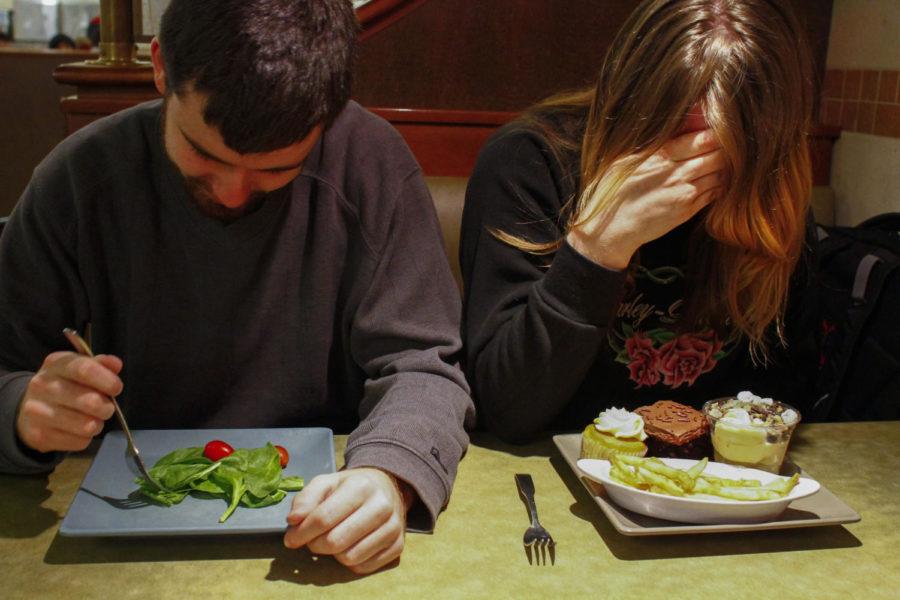Students and staff share the importance of body inclusivity
Tiffany Herring/Iowa State Daily
According to Brown University’s health center, over 74 percent of females and 46 percent of males suffer from negative body image, which makes it an issue that hits close to home for many ISU students.
For some students at Iowa State, the campus community and Ames still have work to do to foster a more body-inclusive and positive environment.
“I do feel that Iowa State students are under pressure to fit a specific body type,” said Ani Smentek, a senior in business management with a minor in the performing arts. “Just ‘cause I have noticed some people will look at others who don’t fit a certain body shape.”
Smentek said that while a majority of the groups on campus are inclusive to all students in terms of body positivity, there are a few that do not seem like they are.
Abbie Waterman, a junior in public relations and political science, said that organizations with a focus on image or the ability to promote diverse bodies tend to show only relatively similar body representation.
“I don’t know how many students feel about the topic,” Smentek said, “but I do know that some say people on campus make it difficult to feel positive about themselves.”
Places outside of campus also have an impact on students’ body image.
“A lot of companies like American Eagle for example and even Barefoot have a range of diversity in terms of race and ethnicity but not much diversity in terms of body positivity,” Waterman said. “I feel when it comes to body positivity there has to be a balance.”
Waterman said that sometimes focusing on either end of the size range can lead to forgetting about sizes in the middle.
“We try to be inclusive for Iowa State students and the community,” said Jacky Herr, the retail store manager for Barefoot Campus Outfitters.
The store carries clothing with sizes ranging from extra small to triple extra large.
“We have a variety of models,” Herr said. “Typically, they are store employees.”
While in the past, the majority of models worked in-store, Herr said the business has recently put out an advertisement on Instagram seeking models. Herr said new models will be chosen from those that applied.
The Body Image Report says that for over one in five adults, images shown in advertising led people to worry about their body image. Insecurities relating to body image can lead to dieting, and statistics indicate that nine out of ten women will resort to not eating when feeling negative about their bodies.
“I love meeting with students one-on-one and helping them,” said Rebecca Harken, a dietitian for campus dining services. “I have seen a wide range of students, the majority female, but all have many different concerns from dietary needs to body image, including eating disorders.”
On campus, students with a meal plan are able to access a dietitian for free by signing up on the dining website. Students without meal plans are also able to access a dietitian through the wellness center.
Harken works with students who have meal plans, helps write menus and manages the special kitchen used for people with dietary needs such as people with celiac disease and gluten-free diets.
“Students are under pressure regardless of gender to maintain a certain body image, which is most likely associated with social media,” Harken said.
Waterman holds a similar view and said that while Iowa State does not pressure students to look a certain way, social media definitely does.
“I wasn’t allowed to get social media till around eighth grade,” Waterman said. “I can’t imagine going through puberty with the constant ideas of how you’re supposed to look continuously popping up when your body is changing.”
Your donation will support the student journalists of the Iowa State Daily. Your contribution will allow us to purchase equipment, send our student journalists to conferences and off-set their cost of living so they can continue to do best-in-the-nation work at the Iowa State Daily.


















Steffen | Apr 24, 2023 at 8:43 am
There are many medical studies about weight, health, diet, a body. “Excessive”weight and anorexia are very dangerous. So how do we balance the discussion? Is this an “ideological” issue as well as a heal question? Is discrimination and ridicule the main concern? Very complicated.